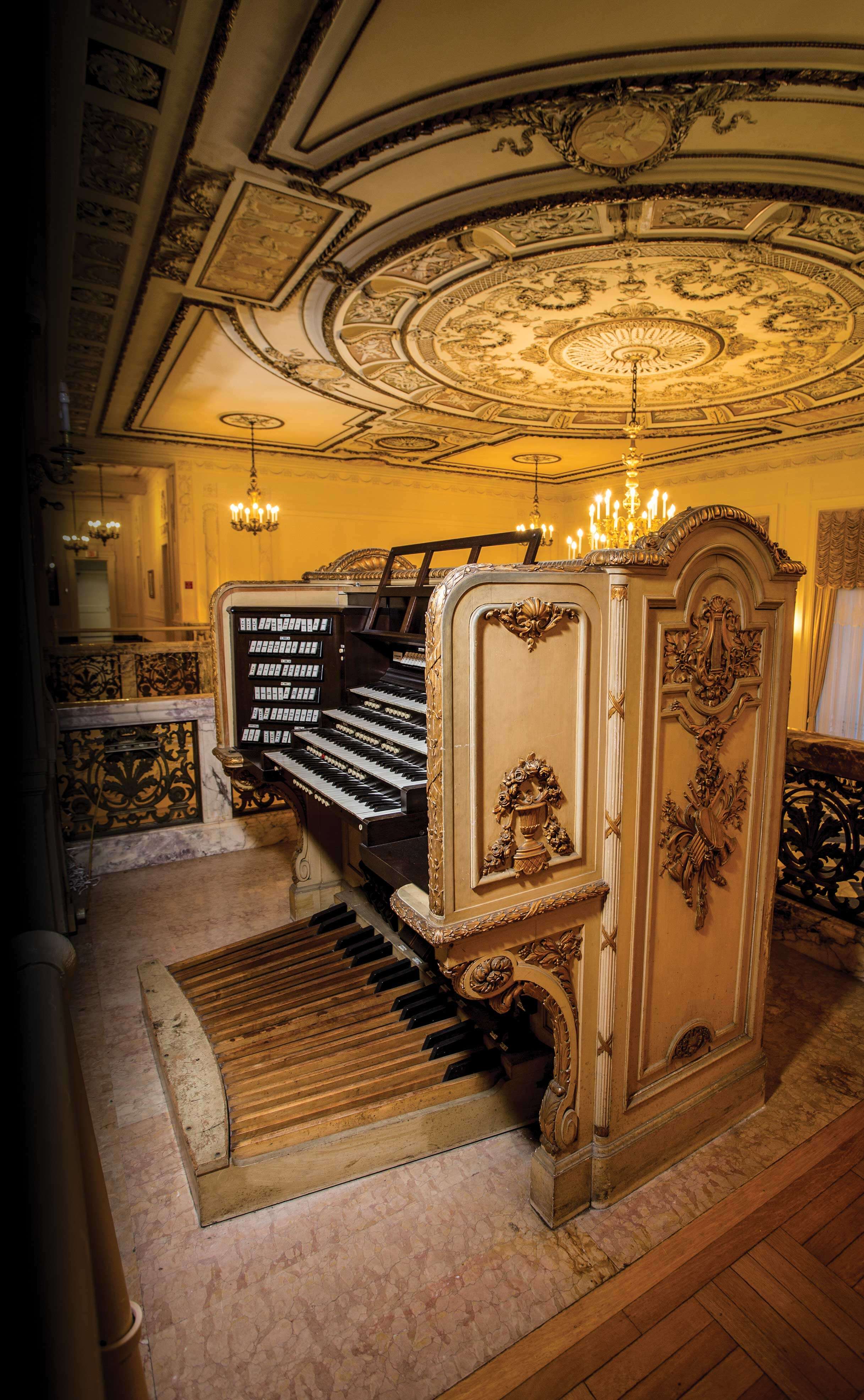
Of Mammoth Proportions
There’s more to Monmouth’s Aeolian organ than meets the eye.
Anchored at the top of Wilson Hall’s central staircase, its pipes and wires radiating throughout the building, Monmouth’s four-manual Aeolian opus 1677 organ was once the heart of Hubert T. Parson’s Shadow Lawn mansion.
Parson, who owned the estate Monmouth now calls home, had the organ built into the fabric of his mansion. It spanned two floors and included double harps, double sets of cathedral chimes, a Concertola (self-playing piano) with double controllers, and nearly 5,000 pipes that were installed behind gilded facades at both ends of the building’s second and third floors. The organ vibrated to life each morning when Parson and his wife, Maysie, began their daily routine of eating breakfast to the tune of Christian hymns. The Great Hall’s 285,000 cubic feet of airspace produced a unique surround sound experience, enriching the acoustics of the instrument.
Organs such as this were once a popular feature in the mansions of America’s fabulously rich, but Monmouth’s is reportedly the only remaining residential stereophonic surround sound Aeolian in existence today. It has deteriorated with age though, and has not been played since the 1970s.